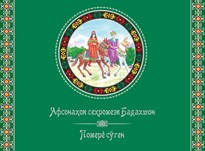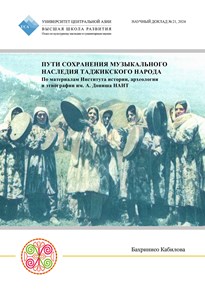The Death of the Usurer. The Executioners of Bukhara
Author: Sadriddin Ayni
Sadriddin Ayni is a famous writer, the founder of Soviet Tajik Literature, and the National Hero of Tajikistan. S. Ayni is the author of many well-known books and literature studies in Tajik. These two books in one volume were translated from Tajik into English by Prof. Abdusalom Mahmadnazarov.
This book holds significant importance not only in S. Ayni’s literary career but also in modern Tajik literature. In this book, Ayni thoroughly describes and analyzes the prevalent issue of money lending and usury, particularly widespread in Central Asia, especially in Bukhara and its surrounding territories, as a social trend. The main hero, Qori Ishkamba (known as Qori the Gut), portrays himself as a saintly man, but he violates all the laws and principles of Sharia by mercilessly plundering the needy people he had lent money to. In this novella, the image of a greedy man is presented with precise psychological analysis. The death of Qori Ishkamba, the main protagonist, is symbolic and signifies the collapse of the feudal system of Bukhara Emirate, which occurs after he loses his wealth. Ayni’s creation of a greedy hero is both humorous and caricatural, but it is a real and vivid personality, not a mere imaginary character.
The foundation of the story’s composition is rooted in the social order of Bukhara, intricately linked to the practice of usury. It traces the development and expansion of usury from its origins in common interpersonal relations to its elevation as a prominent social element, ultimately reaching administrative and state levels.
Another book, “The Executioners of Bukhara” explores pivotal events in the early 20th century within the Bukhara Emirate. As the 20th century dawned, Central Asia experienced a surge of different movements and activities, with various factions fighting for control of the Bukhara Emirate. The victory of the October Revolution in Russia in 1917 and the establishment of the Turkistan Soviet Republic on April 30, 1918, created favorable conditions for 7 Ayni, S. Kulliyot. V. 1. – Stalinabad, Tajikistan State Publisher, 1958. p. 103. 25 pursuing their political objectives. Escalating tensions between Bolshevik Russia and the Bukhara Emirate, the Red Army’s incursion into the Kokand Khanate, and growing discord within the Young Bukharians Movement all contributed to the eruption of conflict between the forces of the Turkistan Soviet Republic and the Bukhara Emirate. Upon the Young Bukharians Movement’s request, the Turkestan government under F. I. Kolesov launched an attack on Bukhara on March 2, 1918, an event known in history as Kolesov’s event. Due to inadequate preparation, misinformation about the political climate, and insufficient forces, the revolutionary forces suffered a defeat. Its participants, supporters, and sympathizers were apprehended by the Bukhara Emirate’s forces, subsequently imprisoned, tortured, and, in some cases, executed. Among those affected was S. Ayni’s brother, Sirojiddin, who was falsely accused of involvement in the coup and subsequently executed. These tumultuous revolutionary events, characterized by executions, imprisonments, persecution, and political contradictions within the Bukhara Emirate, form the core subject matter and content of the story. The depiction of events and incidents in the story The Executioners of Bukhara is rooted in a vivid and tangible reality. The characters’ actions, the settings, and the timeline of their activities are all firmly grounded in authenticity. The author underscores this fact at various points throughout the story. The story’s central character, Majidi Kahkashoni, reinforces this notion by stating, “I am not telling you false stories; I will recount the events I witnessed with my own eyes.”
For inquiries or to place your book orders, please contact: chhu@ucentralasia.org








